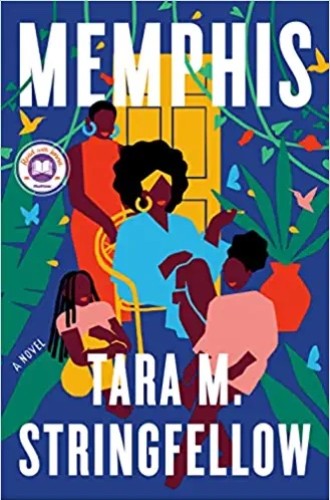Tara Stringfellow’s fictional family brings a real city to life
Like Memphis, Memphis is gritty—filled with danger, tragedy, and humor.
The Douglass community in North Memphis was founded in 1907 on 40 acres of land given to a freed slave, William Rush-Plummer. Plummer named the area for Frederick Douglass, a man he’d befriended and admired. Initially conceived of as an all-Black community, Douglass is the setting for Tara M. Stringfellow’s radiant debut novel, Memphis.
The North family lives in a house on Locust Street that was designed and built by their beloved patriarch, Myron North. What gives the house its breath is the front porch, alive with blossoms, birds, bees, butterflies, and stray cats lying around. A hairstyling shop is built onto the back of the house, and those who enter through the shop’s screen door see a sign overhead that reads, “NO CHILDREN, NO MEN, & WE EAT WHITE FOLK HERE.”
Read our latest issue or browse back issues.
The story opens with Miriam and her two daughters, Joan and Mya, standing before the house, looking for safety and a place to belong. Miriam’s black eye is evidence of what has driven her and her girls back to Memphis from Chicago. Her younger sister, August, takes them in and makes a meal of warmed-up lamb chops. Table scenes throughout the novel establish the family’s foundation of abundant love and belonging to the place they call home. The women provide comfort and inspiration to each other as they try to recover from physical and sexual abuse at the hands of men in their lives. Violence is no stranger to this family. A few days after becoming the first black homicide detective in Memphis, Myron North was lynched. “Beaten beyond recognition. Body thrown in the Mississippi.”
Joan is an artist who always carries her sketchbook and a piece of charcoal with her. She sees something magical in the hands of a family friend, Miss Dawn, and asks if she can draw them. Miss Dawn obliges the child and offers her sage advice. She directs Joan to bury something that belongs to a boy who sexually assaulted her. “Hair works best. A comb. Bury it deep in red earth. Do this at midnight. Tell no one.” Joan’s story is one of healing as she is nurtured by the older women in the family, fed by her own artist’s eye. and strengthened by Miss Dawn’s wisdom.
Memphis is a gritty story, full of danger, tragedy, and humor. Memphis, the city, is also gritty. Miriam recalls during the era of school segregation how “most white folk had fled to the countryside in the early part of the decade, to the cotton fields of Shelby County and its all-white schools.” This wasn’t the first time White folks fled the boundaries of Memphis. In 1878, when yellow fever hit Memphis, those who could afford to leave did. Over 25,000 people, mostly White, fled the city. That left the poor and the Black people to care for the sick and dying. Today, Memphis’s population is 64 percent Black.
Stringfellow is exceptional at setting scenes. So juicy and detailed is her description of dinner that we sit down at the table with the North family, our mouths watering for the golden biscuits coming our way. The entire book is an invitation to come inside and feel at home with the North family.
I can’t resist thinking about this fictional family as I walk in my own neighborhood, around Rhodes College, where August gets her nursing degree. The Douglass community remains mostly Black today. As I walk through the neighborhood where the Norths live, I find blight and boarded-up properties. There’s a Douglass High School and a Douglass Elementary School next door to the Douglass Community Center. Douglass Park is full of life: food trucks, music coming from huge speakers, and children playing on the playground.
Stringfellow, who spent her childhood summers in the Douglass community, now lives in North Memphis. She chose to come back to Memphis after working as an attorney and earning an MFA from Northwestern University. She is a natural storyteller. Her first novel will not likely be the last one we get from this dynamic writer.
Miss Dawn, the neighbor and friend to the North family, notices Miriam’s gift as a singer when Miriam is just a child. She says, “God talks to every baby when they’re born. Every single one. But I believe he talks to some a bit longer. Whispers something only he can understand, I suppose. Some magic bestowed to certain children. And you one of them.”
Tara Stringfellow seems also to have had that extra time with God.







